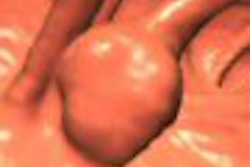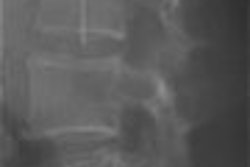A start-up company's efforts to enforce a patent it received for preventing kidney failure during contrast administration has a number of hospitals consulting with their attorneys. A central issue is whether patent holders can successfully enforce patents against physicians who are using generically available compounds and devices for treating patients.
Recent clinical studies indicate that pretreating patients with sodium bicarbonate can have a protective effect against contrast-induced nephropathy. The technique typically uses commonly available materials that are mixed and administered to patients.
Even before the company's inception in September 2003, the two co-founders of MD Scientific were working on sodium bicarbonate therapy to prevent contrast-related acute kidney failure. On March 28, the efforts of president and CEO Shade Mecum and chief medical officer Dr. Patrick Burgess, Ph.D., were rewarded with a method patent (No. 7,019,035) from the U.S. Patent Office.
"This method, we think, will improve radiology by reducing acute renal failure from iodated contrast agents, making it safe for high-risk patients to receive life-saving diagnostic imaging and related therapy," Mecum said. "MD's bicarbonate therapy will make it safe to use more contrast agent for better images, save lives, and reduce the cost of healthcare."
Fact Box
Provided by MD Scientific. |
In addition to its method patent, MD Scientific is developing a proprietary sodium bicarbonate drug to sell to hospitals and other healthcare entities to save users time and money by not having to prepare the bicarbonate compound themselves. The company is working with the FDA to develop a protocol assessment to begin its phase III clinical study.
Mecum estimates that it could take as long as three years to complete the study and have the FDA clear MD Scientific's new drug application. "In the meantime, we needed some way to allow people to continue to use it, protect our intellectual property, and protect them," he said.
MD Scientific began to notify healthcare facilities around the country in late March about its patent approval. Mecum said that the company is in discussions with more than 300 hospitals about obtaining a license to use its bicarbonate therapy method. He declined to disclose the license fee, other than to say it is "a nominal amount in dollars per month," based on the number of CT or x-ray procedures that a facility conducts each month that use iodated contrast agents.
"The hospitals are looking into whether the patent is applicable and enforceable, and, as soon as they do due diligence, we suspect we will hear from many of them," Mecum said.
Legal questions
MD Scientific's patent and license notices have drawn the attention of the American College of Radiology (ACR), prompting the Reston, VA-based association to send a bulletin to its members.
In its memorandum, the ACR writes that the "key legal question is whether any company can claim patent rights where a physician or healthcare facility performs a procedure on a patient that does not involve use of a patented machine, matter, or biotechnology. The answer," the notice continues, "likely depends on the nature of the patent, the substance involved, and how a physician or hospital uses the substance."
In part, the ACR is concerned whether using a generic drug or solution, such as bicarbonate mixed with another compound, to treat a patient would infringe on MD Scientific's patent, even if it were not used for diagnostic purposes. Because the patent question is somewhat murky, the ACR is advising hospitals to confer with their attorneys to assess their own liabilities under the patent claim.
William J. Stilling, an attorney who handles legal healthcares issue for Parsons Behle & Latimer in Salt Lake City, said the issue may boil down to whether physicians decide to use the Medical Procedures Innovation and Affordability Act mentioned by the ACR to claim exemption from the patent, and whether the MD Scientific's patent falls within the medical activity of that exemption.
"There are a couple of issues that face the doctors -- whether their use fits into the exemption that Congress has granted, and whether the patent is valid in the first place," Stilling said. "The second part of that is a bigger hurdle, because if they decide to use (the sodium bicarbonate method) and it doesn't fit within the exemption and they are sued, (the physicians) may be successful, but they have a higher burden of proof to show the patent is not valid."
Also at issue may be where the court draws the line between intellectual property rights and common medical knowledge about a procedure, method, or technique.
One key to the legal issue is the stipulations outlined within the patent itself. "The claims at the end of the patent define the scope of protection for the owner," said Bill Warren, partner in the law firm of Sutherland Asbill & Brennan in Atlanta. "If MD Scientific has discovered that a known compound has a new therapeutic benefit, they would be entitled in the U.S. to a patent covering new use of the compound."
The patent "is only enforceable if it is valid," Warren added. "If any one of the potential defendants believes the patent is invalid and they can prove others were practicing the claimed invention before MD Scientific, they could counter a case of infringement with a case in invalidity."
The patent, Mecum said, "covers a broad range of protocols (in which) bicarbonate can be used to protect the kidney." In the piece, Burgess and several colleagues describe how the increased use of iodated contrast agents has elevated the incidence of contrast-induced nephropathy (CIN), which, according to the article, accounts for more than 10% of hospital-acquired renal failure. Details appeared in the May 19, 2004 issue of the Journal of the American Medical Association (May 19, 2004, Vol. 291:19, pp. 2328-2334).
While Mecum said it is too early to gauge the reaction from the patent notices sent to healthcare providers, he stated that MD Scientific's patent attorney has assured the company that the patent is enforceable. "We explain that it is our intention to use the drug in a safe, ready-to-use form after we conduct clinical trials," he added. "In the meantime, people who use it with other fluids that are available need to get a license."
By Wayne Forrest
AuntMinnie.com staff writer
June 13, 2006
Related Reading
GE investigates Omniscan cases, June 12, 2006
Part II: Palliative steps prevent contrast-induced nephropathy, September 20, 2005
Part I: Identifying patients at risk of contrast-induced nephropathy, September 13, 2005
N-acetylcysteine does not prevent contrast-induced nephropathy, June 7, 2005
1 CDC Health and Vital Statistics, National Discharge Survey: 2000 Annual Summary. Series 13, Number 153, November 2002.
2 Lamiere, et al. J. Am Soc Nephrol. 2001: 12:S20-S32/Lamiere, et al. J. Am Soc Nephrol. 2006: 17:923-925.
3 Bates, et al. Clinical Infectious Disease. 2001: 32;686-692.
4 Bennett. Renal Failure 1997; 19:225-226.
5 Briguiori C, Tavano D, Columbo A, "Contrast agent nephrotoxicity." Prog Cardiovasc Dis. 2003: 45:493-503.
Copyright © 2006 AuntMinnie.com



















